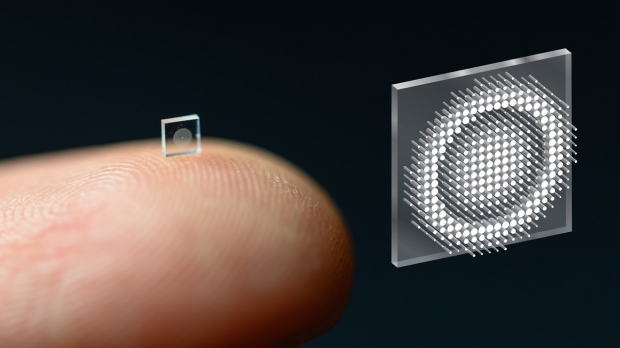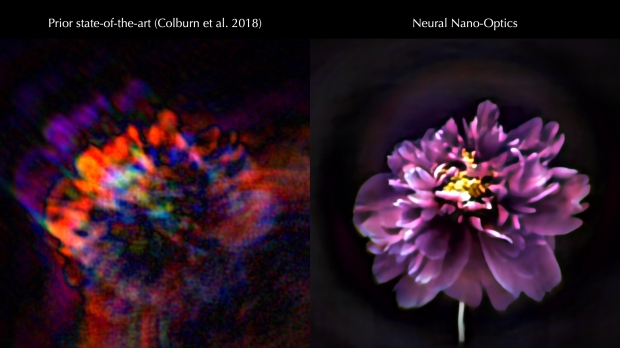The possibilities are endless with micro-cameras as they could be used for health purposes such as detecting problems within the human body, or being outfitted to robots that have severe size and weight requirements.

However, the technology has quite made it there yet as previous creations of nano or micro cameras haven't been able to produce high-quality images with accurate color. Now, researchers from Princeton and the University of Washington have overcome some of those previous hurdles with a new micro-camera that is about the size of a grain of salt.
Instead of using curved glass as a typical camera would, the tiny camera uses what is called a "metasurface", which is about half a millimeter wide and is covered in cylindrical posts that are about the same size as the virus HIV. All of these posts seen on the metasurface serve as an optical antenna, and when partnered with machine learning algorithms, the camera is able to produce an image that far exceeds previous creations in its category.

As you can see in the above image, the sides of the frame are slightly blurry, but other than that small noticeable quality, the image is relatively decent when considering the size of the camera that has taken it. The images taken by the small camera are comparable to a typical camera lens setup that is 500,000 times larger in volume.
Ethan Tseng, a computer science Ph.D. student at Princeton and co-lead on the study, said, "It's been a challenge to design and configure these little microstructures to do what you want. For this specific task of capturing large field of view RGB images, it's challenging because there are millions of these little microstructures, and it's not clear how to design them in an optimal way."
Felix Heide, the study's senior author and an assistant professor of computer science at Princeton said, "We could turn individual surfaces into cameras that have ultra-high resolution, so you wouldn't need three cameras on the back of your phone anymore, but the whole back of your phone would become one giant camera. We can think of completely different ways to build devices in the future."
For more information on this story, check out this link here.


